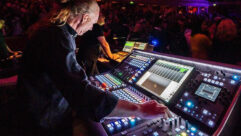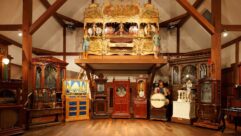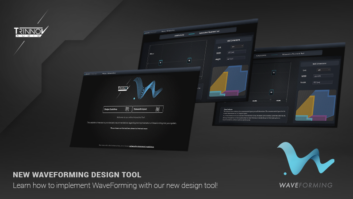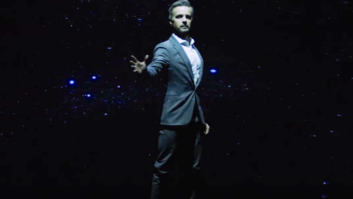A growing number of sound engineers and producers are getting on the
bandwagon. Among them is Sam Kopper, who rolled out the FiberPlex
â„¢ fiber system yet again Friday from his electric green school bus-turned-studio van for a headliner event at Sculler’s Jazz Club near Boston.
As the executive producer on record for mixing the “Live from Sculler’s” radio broadcast series aired on WGBH 89.7, the most recent broadcast of which took place on Friday celebrating the 70th birthday tour of legendary jazz fusion and vibraphone performer Gary Burton, Kopper arrived a few minutes before the show to oversee the setup of the LightViper audio snake from his nearby bus studio, known as Gypsy Dancer.
“Fiber that’s not a whole lot bigger than a few strands of spaghetti is a beautiful thing,” commented Kopper, owner of LocoMote Media, Boston, who has been using the LightViper fiber optic system as an audio snake for almost a year. Having done live concert mixes for radio broadcast since the days of multitrack tape, Kopper’s setup now requires only a few strands of fiber rather than a 40-pair, 500-pound copper snaked from the remote bus, across a sidewalk and into the club. Even better still, the setup doesn’t require his mixing engineer to coil up 200 feet of copper cable after a long night of … sound engineering.
Kopper is one of a growing number of producers and sound engineers now using optical snakes for live mixing and other media applications that require transporting music error-free and transparently over greater distances, by a 400:1 ratio compared to copper. “Our LightViper system is getting in a lot more gigs than the rest of us,“ joked Buddy Oliver, who is a bass player and vocalist with
as well as CEO of
, which makes fiber optic communications systems for government, large businesses and A/V as well as sound reinforcement applications.
The typical
includes a FOH breakout unit and 32×8 stage box connected by optical cable to the breakout unit or a FiberPlex card installed in a Yamaha digital mixer at the remote van for sending and receiving optical signals between the venue and the van. When used as part of the FiberPlex Broadcaster’s Toolbox, LightViper can be coupled with FiberPlex’s
universal media converter or its active wave division multiplexer, the
, which includes pluggable
modules and can transport up to 16 channels in any combination of HD/SD-SDI or HDMI video, audio, Ethernet and more on a single fiber pair.
Optical fiber systems like these are being chosen over the copper equivalent because they have no bandwidth ceiling, no distance restrictions and no signal degradation characteristics.
For Kopper, an optical fiber snake means eliminating the grounding issues that come with copper, especially long copper snakes that are often strung across streets and through an electronics juggernaut, adding buzzes, hisses, and crackles along the way. “Now in the world of fiber optics and digital signals being carried by light instead of copper electricity, you have almost a hundred percent transparency,” he said.
He expects the ease, quality and greater affordability of today’s live mixing to help bring back the lost art of putting live music to air or to stream. With new streaming and HD channels demanding fresh content, and with new digital and fiber optics technologies able to capture live feeds easier and at better quality, he sees the potential to do more live broadcasts. “I’m on a bandwagon to bring it back,” said Kopper. “I love to get sound from out where people are making it! Radio, however it’s delivered, is all about local and live,” he said.










